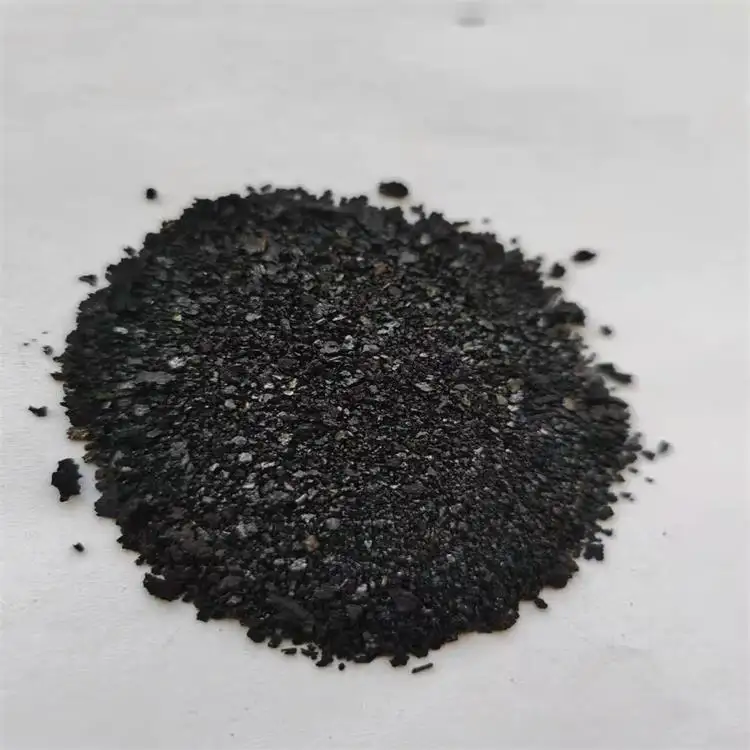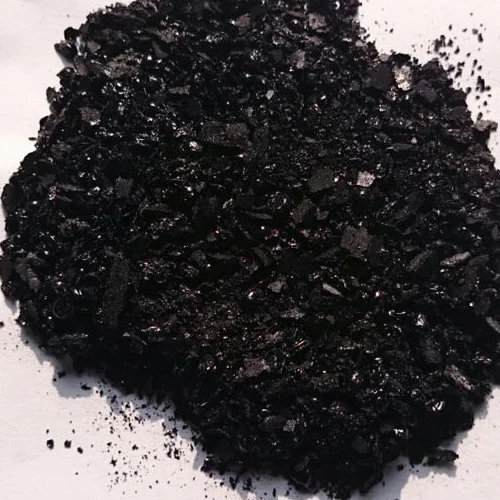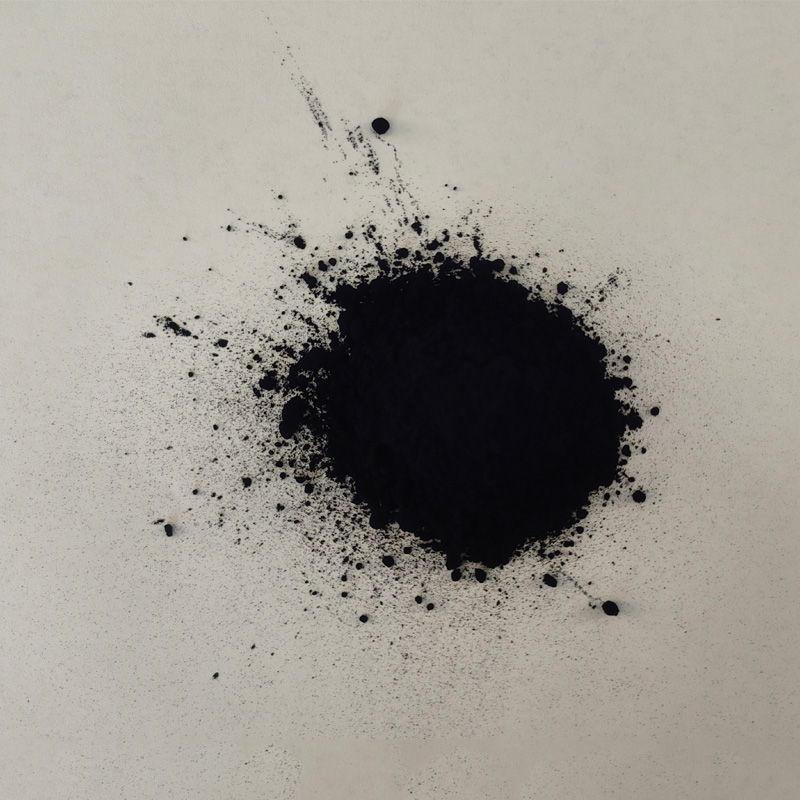Sulphur Black Dye: High Fastness, Economical Textile Colorant
Understanding Sulphur Black: Industry Trends and Technical Foundations
In the dynamic world of industrial dyes, Sulphur Black stands as a cornerstone, particularly renowned for its deep, rich black hues and excellent fastness properties on cellulosic fibers. Its widespread adoption across textile, paper, and leather industries underscores its critical role in modern manufacturing. Current industry trends reveal a clear shift towards more sustainable and efficient dyeing processes, prompting manufacturers to innovate. There's an increasing demand for Sulphur Black variants with reduced sulphide content to mitigate environmental impact, alongside improved dispersion and consistency for enhanced dyeing efficiency. Producers are also focusing on offering tailored solutions, adapting the dye's characteristics to specific application requirements and evolving regulatory standards. This focus on both environmental responsibility and performance optimization continues to drive advancements in Sulphur Black production and application techniques.
The technical foundation of Sulphur Black lies in its unique chemical structure, a complex mixture of sulphurized organic compounds. Unlike direct or reactive dyes, Sulphur Black requires a reducing agent, typically sodium sulphide, to render it soluble and allow its absorption onto the fiber. Subsequent oxidation then fixes the dye, imparting its characteristic robust black shade. The stability of the chromophore within the dye molecule contributes significantly to its superior fastness properties against washing, light, and rubbing, making it an economically viable and highly durable choice for mass production. Understanding these fundamental chemical interactions is paramount for optimizing dyeing recipes, ensuring consistent color yield, and maximizing the overall efficiency of the dyeing process in industrial settings.

The Sophisticated Manufacturing Process of Sulphur Black
The production of Sulphur Black is a sophisticated chemical synthesis process, primarily involving the "sulphurization" of organic precursors. This manufacturing journey begins with the careful selection of raw materials, which typically include dinitrophenol, dinitrochlorobenzene, or other aromatic compounds, along with sodium polysulphide and elemental sulfur. The purity and precise composition of these raw materials are critical, as they directly influence the final dye's shade, strength, and consistency. Strict quality control measures are implemented at this initial stage to ensure adherence to internal specifications and international standards like ISO 9001 for quality management, laying the groundwork for a high-performance product.
The core of the manufacturing process is the reaction phase, where these selected precursors are heated with sodium polysulphide and sulfur in large, controlled reactors. This polysulphide fusion process, carried out under specific temperature and pressure conditions, facilitates the formation of complex sulphurized compounds that constitute Sulphur Black. Following the reaction, the crude dye is subjected to a series of purification steps. This typically involves filtration to remove insoluble impurities, followed by extensive washing to remove excess salts and unreacted chemicals, ensuring a cleaner, more concentrated product. Post-purification, the dye slurry undergoes drying, often using spray drying or tray drying methods, which transforms it into a solid form. Finally, the dried dye is carefully ground to achieve a uniform particle size distribution, which is crucial for optimal dispersion and dyeing performance. Each batch is rigorously tested against industry benchmarks, including ISO and ANSI standards, to confirm its strength, shade, and fastness properties, ensuring consistent quality and performance for end-users. The entire process is designed for optimal yield and minimal waste, reflecting a commitment to both product excellence and environmental responsibility.
Technical Specifications and Performance Parameters
Selecting the appropriate grade of Sulphur Black hinges on a comprehensive understanding of its technical specifications. These parameters not only define the dye's quality but also dictate its suitability for specific applications, ensuring optimal color yield, consistency, and fastness. Key indicators include dye strength, hue, sulphide content, insoluble matter, and pH value, all of which are meticulously controlled during manufacturing and verified through stringent quality assurance protocols. For instance, a lower sulphide content signifies an environmentally friendlier product, while precise hue consistency ensures batch-to-batch repeatability crucial for high-volume textile operations.
| Parameter | Typical Range/Value | Significance |
|---|---|---|
| Colour Index Name | Sulphur Black 1 | Universal identification for this specific dye class. |
| Colour Index Number | C.I. 53185 | Unique numerical identifier. |
| CAS Number | 1326-82-5 | Chemical Abstracts Service registry number for unique chemical identification. |
| Dye Strength (%) | 100% - 200% (or higher, standardized) | Indicates color yield; higher strength means less dye required. |
| Hue | Reddish to Greenish Black | The specific undertone of the black shade. |
| Sulphide Content (as Na2S%) | Typically <1.0% (for low sulphide grades) | Lower content reduces odor and environmental impact. |
| Insoluble Matter (%) | Typically <0.5% | Indicates purity; lower insoluble matter prevents defects in dyeing. |
| Moisture Content (%) | Typically <5.0% | Affects dye weight and storage stability. |
| pH Value (1% solution) | Typically 9-11 | Influences dye solubility and stability in the dyebath. |
| Fastness Properties (Light, Washing, Rubbing) | Good to Excellent | Crucial for end-product durability and consumer satisfaction. |
The robust nature of Sulphur Black is evident in its exceptional fastness properties. Its ability to resist fading from light exposure, color bleeding during washing, and crocking from rubbing makes it an indispensable choice for demanding applications. These attributes contribute significantly to the longevity and aesthetic integrity of dyed materials, ensuring that products maintain their quality and appearance throughout their lifecycle. Manufacturers often conduct extensive lab testing and pilot runs, adhering to international standards such as ISO 105 series for color fastness, to validate these performance claims and provide customers with reliable data.
Diverse Applications and Unmatched Technical Advantages
Sulphur Black boasts a remarkable versatility, finding critical applications across various industries, predominantly in the textile sector. Its unparalleled ability to produce deep, cost-effective black shades makes it the dye of choice for cotton, rayon, and other cellulosic fibers. A prime example is its extensive use in denim manufacturing, where it contributes to the iconic faded black jeans look through subsequent washing and finishing processes. Beyond textiles, Sulphur Black is also utilized in the paper industry for coloring paper pulp and in leather dyeing, where its strong affinity for natural fibers ensures deep penetration and long-lasting color. The dye's technical advantages extend to its compatibility with various dyeing methods, including jigger dyeing, pad dyeing, and continuous dyeing, offering flexibility to manufacturers.
The technical advantages of Sulphur Black are manifold. Its high tinctorial strength translates into lower dye consumption, leading to significant cost savings in large-scale operations. Furthermore, its excellent wet fastness properties mean dyed fabrics can withstand repeated washing without significant color loss, enhancing product durability and consumer satisfaction. From an environmental perspective, advancements in low-sulphide Sulphur Black variants have drastically reduced the ecological footprint, making it a more sustainable option compared to traditional forms. These innovations highlight the dye's evolving role in meeting both performance and environmental criteria, offering manufacturers a reliable and responsible choice for achieving superior black coloration.

Choosing the Right Partner: Manufacturer Comparison and Custom Solutions
When sourcing Sulphur Black, selecting a reputable manufacturer is paramount for ensuring consistent quality, reliability, and technical support. A thorough manufacturer comparison should consider not only product specifications but also adherence to international quality standards (e.g., ISO 9001), environmental certifications (e.g., ISO 14001, REACH compliance), and demonstrated service longevity in the industry. Leading manufacturers distinguish themselves through rigorous quality control throughout their production chain, from raw material sourcing to final product testing. They also typically offer comprehensive technical assistance, helping clients optimize dyeing processes and troubleshoot challenges, which is invaluable for achieving desired outcomes and efficiency.
Beyond standard offerings, the ability to provide customized solutions is a significant differentiator. Reputable suppliers understand that specific dyeing conditions or end-product requirements may necessitate tailored Sulphur Black variants. This could involve adjusting sulphide content, refining particle size for improved dispersion, or developing liquid forms for specific automated dyeing systems. Companies with extensive R&D capabilities and a collaborative approach can work closely with clients to formulate dyes that precisely match their unique technical specifications and performance targets, offering a competitive edge and fostering long-term partnerships. This commitment to flexibility and innovation is crucial for industries constantly seeking to optimize their processes and output.
Real-World Impact: Application Case Studies
The practical effectiveness of Sulphur Black is best illustrated through its successful application in diverse industrial settings. One notable case involves a major denim manufacturer seeking to achieve a consistent, deep black shade on large volumes of cotton fabric while minimizing effluent treatment costs. By collaborating with a specialized Sulphur Black supplier, they implemented a low-sulphide variant combined with optimized reduction agents. This tailored solution not only enabled them to meet stringent shade requirements across millions of meters of fabric but also significantly reduced the sulphide load in their wastewater, leading to substantial savings in chemical oxygen demand (COD) and compliance with evolving environmental regulations. This demonstrates Sulphur Black's capability to deliver both aesthetic and ecological benefits.
Another compelling example comes from the leather industry, where a tannery aimed to produce high-quality black leather with exceptional fastness for automotive interiors. Traditional dyes often struggled with light fastness and rubbing fastness on certain leather types. Switching to a high-purity, standardized Sulphur Black allowed them to achieve a deep, uniform black with superior resistance to UV light and abrasion, crucial for demanding automotive applications. The dye's inherent stability and the supplier's technical support in optimizing the dyeing process contributed to enhanced product durability and reduced rejection rates, cementing Sulphur Black's role as a reliable solution for critical industrial applications.

Frequently Asked Questions (FAQ) about Sulphur Black
- Q: What are the primary advantages of using Sulphur Black over other black dyes?
- A: Sulphur Black offers excellent cost-effectiveness, superior fastness properties (especially to washing, light, and rubbing), and deep, rich black shades on cellulosic fibers like cotton. It's also highly versatile for various dyeing methods.
- Q: Is Sulphur Black environmentally friendly?
- A: While traditional forms have sulphide content, modern manufacturing has developed low-sulphide and even sulphide-free variants of Sulphur Black, significantly reducing environmental impact. Responsible suppliers adhere to strict environmental standards and offer eco-friendly options.
- Q: How should Sulphur Black be stored to maintain its quality?
- A: It should be stored in a cool, dry, and well-ventilated area, away from direct sunlight, moisture, and strong oxidizing agents. Proper sealing of container111s is essential to prevent degradation and maintain product integrity.
- Q: What are the typical safety precautions when handling Sulphur Black?
- A: Always wear appropriate personal protective equipment (PPE), including gloves, eye protection, and respiratory masks, especially when handling powdered forms. Ensure adequate ventilation in the workplace. Refer to the product's Material Safety Data Sheet (MSDS) for comprehensive safety guidelines.
Commitment to Quality: Delivery, Warranty, and Customer Support
Our commitment to partners extends beyond delivering high-quality Sulphur Black. We understand that reliable logistics and unwavering support are critical for seamless operations. Our streamlined supply chain ensures efficient delivery timelines, tailored to meet your production schedules and minimize lead times. We maintain robust inventory levels and work with trusted logistics partners to guarantee on-time arrival of your orders, whether domestic or international. Each batch of Sulphur Black is thoroughly inspected and documented, arriving with a clear certificate of analysis.
We stand behind the quality of our Sulphur Black with comprehensive warranty provisions, reflecting our confidence in its consistent performance and adherence to specified technical parameters. In the rare event of a concern, our dedicated customer support team is readily available to provide swift and effective resolutions. Our technical experts are equipped to offer guidance on product application, process optimization, and troubleshooting, ensuring you achieve the best possible results. This holistic approach to service underscores our dedication to fostering long-term, trust-based relationships with our clients, providing not just a product, but a complete solution and partnership.
References
- Broadbent, A. D. (2001). Basic Principles of Textile Dyeing. Society of Dyers and Colourists.
- Christie, R. M. (2007). Colour Chemistry. The Royal Society of Chemistry.
- Lewis, D. M. (2012). Wool Dyeing. Woodhead Publishing.
- Shore, J. (2004). Cellulosic Dyeing. Society of Dyers and Colourists.
- Peters, R. H. (1975). Textile Chemistry, Vol. III: The Physical Chemistry of Dyeing. Elsevier.
-
The Timeless Art of Denim Indigo Dye
NewsJul.01,2025
-
The Rise of Sulfur Dyed Denim
NewsJul.01,2025
-
The Rich Revival of the Best Indigo Dye
NewsJul.01,2025
-
The Enduring Strength of Sulphur Black
NewsJul.01,2025
-
The Ancient Art of Chinese Indigo Dye
NewsJul.01,2025
-
Industry Power of Indigo
NewsJul.01,2025
-
Black Sulfur is Leading the Next Wave
NewsJul.01,2025

Sulphur Black
1.Name: sulphur black; Sulfur Black; Sulphur Black 1;
2.Structure formula:
3.Molecule formula: C6H4N2O5
4.CAS No.: 1326-82-5
5.HS code: 32041911
6.Product specification:Appearance:black phosphorus flakes; black liquid

Bromo Indigo; Vat Bromo-Indigo; C.I.Vat Blue 5
1.Name: Bromo indigo; Vat bromo-indigo; C.I.Vat blue 5;
2.Structure formula:
3.Molecule formula: C16H6Br4N2O2
4.CAS No.: 2475-31-2
5.HS code: 3204151000 6.Major usage and instruction: Be mainly used to dye cotton fabrics.

Indigo Blue Vat Blue
1.Name: indigo blue,vat blue 1,
2.Structure formula:
3.Molecule formula: C16H10N2O2
4.. CAS No.: 482-89-3
5.Molecule weight: 262.62
6.HS code: 3204151000
7.Major usage and instruction: Be mainly used to dye cotton fabrics.

